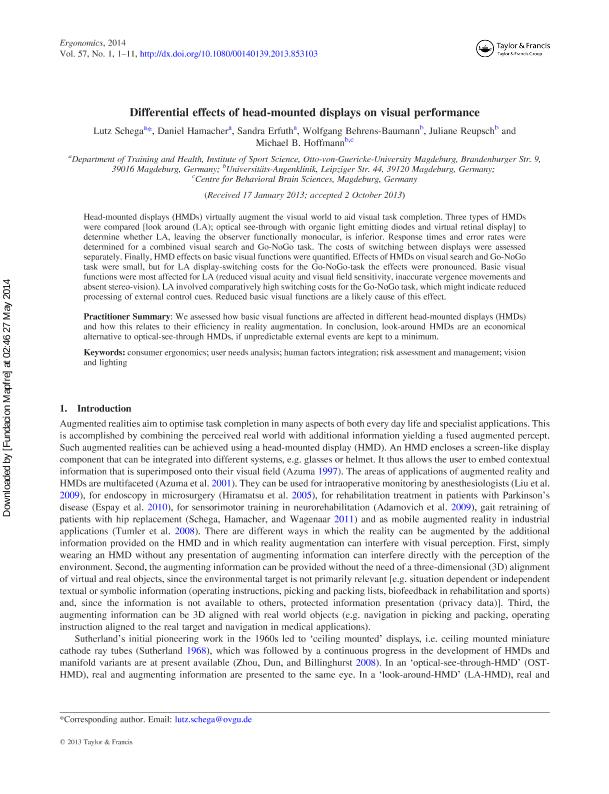Differential effects of head-mounted displays on visual performance

Contenido multimedia no disponible por derechos de autor o por acceso restringido. Contacte con la institución para más información.
| Tag | 1 | 2 | Value |
|---|---|---|---|
| LDR | 00000cab a2200000 4500 | ||
| 001 | MAP20140018970 | ||
| 003 | MAP | ||
| 005 | 20140530130416.0 | ||
| 008 | 140527e20140106esp|||p |0|||b|spa d | ||
| 040 | $aMAP$bspa$dMAP | ||
| 084 | $a875 | ||
| 245 | 0 | 0 | $aDifferential effects of head-mounted displays on visual performance$cLutz Schega...[et.al] |
| 520 | $aHead-mounted displays (HMDs) virtually augment the visual world to aid visual task completion. Three types of HMDs were compared [look around (LA); optical see-through with organic light emitting diodes and virtual retinal display] to determine whether LA, leaving the observer functionally monocular, is inferior. Response times and error rates were determined for a combined visual search and Go-NoGo task. The costs of switching between displays were assessed separately. Finally, HMD effects on basic visual functions were quantified. Effects of HMDs on visual search and Go-NoGo task were small, but for LA display-switching costs for the Go-NoGo-task the effects were pronounced. Basic visual functions were most affected for LA (reduced visual acuity and visual field sensitivity, inaccurate vergence movements and absent stereo-vision). LA involved comparatively high switching costs for the Go-NoGo task, which might indicate reduced processing of external control cues. Reduced basic visual functions are a likely cause of this effect. | ||
| 773 | 0 | $wMAP20100019818$tErgonomics : the international journal of research and practice in human factors and ergonomics$dOxon [United Kingdom] : Taylor & Francis, 2010-$x0014-0139$g06/01/2014 Volumen 57 Número 1 - enero 2014 |

